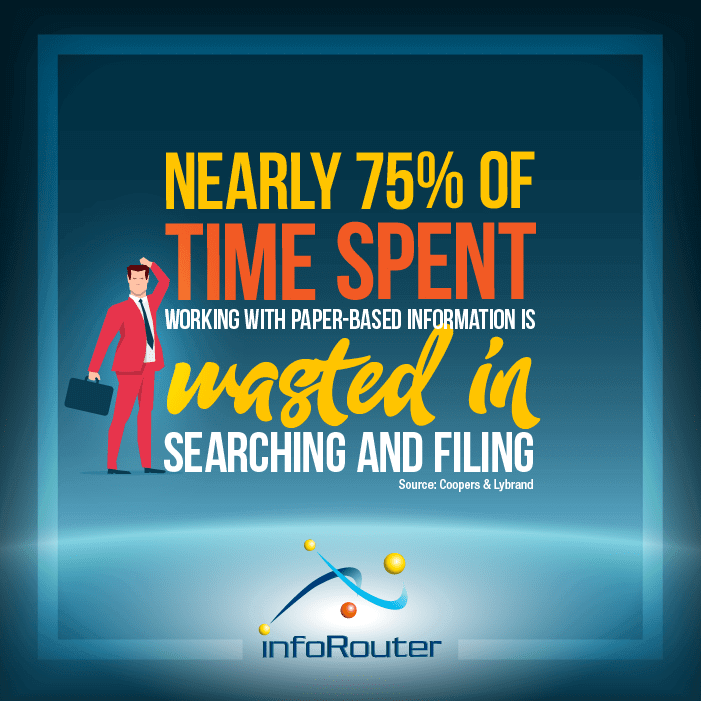95% of Corporate information exists on paper
95% of corporate information exists on paper, which makes paper-based documents a significant part of corporate memory. However, these physical documents are not only difficult to manage but also time-consuming to access, especially those stored off-site. The risk of misfiling, loss, and damage further complicates the situation. Digitizing paper documents and creating electronic versions can greatly improve the accessibility of vital information, enabling faster retrieval, enhanced security, and better collaboration across teams. Moreover, transitioning to a digital document management system reduces storage costs, ensures compliance with regulatory standards, and minimizes the environmental impact associated with paper usage.

Documents are generated every day with an ever increasing pace. Every document that gets generated brings about some sort of liability for the organization.
A few examples of the types of paper and digital content that gets created:
- Proposals
- Contracts
- Legal documents
- Human resources related documents
- Financial reports
- Forms
- Images
- Scanned Documents
- Announcements
- Memos
- Emails
- Correspondences with customers,
vendors and partners


Time spent searching for documents
Studies show that in most corporate environments, employees spend a significant amount of their time trying to find information they need in their daily routines. Time spent searching for documents, re-creating documents that already exist, and shuffling through unstructured information account for billions of dollars of wasted time in the US alone. In fact, most organizations do not effectively track their corporate documents or realize the vast number of documents they create in their businesses. Implementing a robust search feature can significantly reduce this wasted time and improve productivity.
To find out how infoRouter can vastly improve your search for documents, visit our infoRouter Search Features page.
Transform your paper clutter into digital assets. Discover infoRouter’s features.

Documents are lost and misfiled everyday
Lost and misfiled documents account for a huge loss for companies. When documents are lost or misfiled, knowledge workers spend their valuable time searching for these. They usually end up re-writing the document rather than continuing to search for it. This causes duplicate copies of the same document with slight differences, leading to confusion as to which version is to be used.
With infoRouter, it is virtually impossible to lose documents. Thanks to the multi-layer recycle bin feature, all documents can be easily recovered without needing to revert to backups. This ensures that your team can always access the vital information they need. Eliminate the risk of lost files and avoid the inefficiency of duplicating work, ensuring your team stays productive and focused on more valuable tasks.
Cost of Creating and Re-creating Lost Documents
According to research, companies spend $20 in labor to file a document, $120 in labor to find a misfiled document, and $220 in labor to reproduce a lost document.
These costs can add up significantly over time, especially in larger organizations. By investing in a document management system, businesses can reduce these inefficiencies, minimize the risk of lost or misfiled documents, and ensure that valuable resources are spent on more productive activities, regardless of the size of the company.

No matter the size of your organization, investing in a document management system to eliminate paper-based problems is a critical decision every business should carefully consider. Streamlining document workflows and reducing manual processes can benefit companies of all sizes by improving efficiency, security, and compliance.
"Before infoRouter, managing our project documents was a nightmare. Now, everything is organized and easily accessible, leading to a 30% reduction in project turnaround time."
Discover how our customers have transformed their document management with infoRouter. Read more success stories and see the benefits firsthand on our Customer Testimonials page.
Links to important resources:
For a list of common pain points and how infoRouter can be the solution, visit our resource on Document Management Pain Points
For a list of detailed benefits, please visit Top Ten Benefits of Document Management Systems - An Executive Overview page.
To learn more about infoRouter, please visit Top Ten reasons to use infoRouter - An Executive Overview.
Read about Why is document management important

